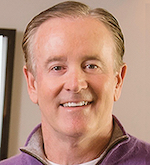|
|
I suspect I’m not alone among PR pros in thinking that “Math Avoidance” was one of my primary reasons in selecting a Communications major. But when I started my first PR job at DIRECTV, in 1993, and my boss asked me to measure the results of our latest campaign, I panicked: I might have to figure out how to read data. Doesn’t that require some math proficiency? Mercifully, the “Don Draper” of our high priced PR agency scoffed at the notion: “PR is not measurable. Everyone knows that.” So we didn’t.
Well, now it’s 2015, and we all know that Don Draper was a very different man in the Mad Men series finale. He went from the tortured, closed and insensitive womanizer in 1960 to the creator of 1971’s “Coke: It’s the Real Thing,” one of the most feel-good ad campaigns ever.
It seems counterintuitive to turn to data to find human connection, but the evidence is abundant. It’s because of data that your smartphone and your apps are able to understand and anticipate your needs before you articulate them—and they are just getting smarter.
So, what would Don Draper tell a client who has been banging his head against the wall, trying to figure out how to reach more people? He would tell them data is the foundation for PR and messaging.
• The most effective way to connect with your audience is through authentic human connection.
• Human connection comes through understanding.
• The fastest way to understand your audience at scale is through data.
• The data will reveal the Who, What, When, Where, Why and How of your audience.
Using that data, PR pros can apply their creative minds to a marketing and storytelling plan that resonates with your clients across all possible communications channels: Paid, Earned, Shared and Owned (PESO).
When you take this all into consideration, it’s easy to see the real reason that Google and social media enabled such a massive advertising revolution: targeting. Google was first to directly connect advertisers with their consumers, and that targeting enabled stronger and deeper connections between advertisers and users. Social media took that connection a step further by understanding our social habits and delivering curated content into our feeds.
Let me paint a picture of how you can use data to establish a deeper connection with new customers.
• You work for a major auto maker who wants to find, engage and convert more luxury car buyers.
• You analyze over 100 million follower relationships among 40 thousand people who talked about luxury transportation on Twitter in all of 2015.
• You identify key passion areas, groups and subgroups
• You discover that luxury car fans are more likely to use their car’s connectivity to consume podcasts, YouTube, Audible and other online content while driving.
The top 3 content categories they consume are:
• News: Favorite news: business/financial
• Sports: Favorite sport to watch on TV: Tennis
• Comedy: Favorite comedian: Louis CK
With this information, you invest in a marketing strategy that spans Paid, Earned, Shared and Owned (PESO) channels.
• Paid: You advertise in top podcasts and social media channels.
• Earned: You partner with Louis CK or Serena Williams on an influencer campaign to steer their audiences toward your brand.
• Shared: You create share-worthy social graphics, some of which are promoted.
• Owned: You create your own podcast or video series serving car enthusiasts.
By finding the right audience and delivering them content that really means something to them, you see measurable improvement in awareness and conversion.
The Don Draper renaissance happened throughout the course of seven seasons. The data renaissance is happening right now, at a much faster pace, and its killer app—deeper human understanding—is at the heart of more effective and sharper communications.
* * *
Lynn Fox is managing director, tech media and engagement at WCG, a W2O Group Company. She can be reached at [email protected]. Follow her on Twitter, @foxycar



 Real Chemistry has hired Wunderman Thompson’s Andy Johnson as chief information officer.
Real Chemistry has hired Wunderman Thompson’s Andy Johnson as chief information officer. The communications industry is often so caught up in the role of measurement that it loses sight of arguably the most important component in the measurement mix—the client’s bottom line.
The communications industry is often so caught up in the role of measurement that it loses sight of arguably the most important component in the measurement mix—the client’s bottom line. Imre has recruited Atul Sharma, who was VP-analytics at Porter Novelli, for the senior VP-intelligence slot.
Imre has recruited Atul Sharma, who was VP-analytics at Porter Novelli, for the senior VP-intelligence slot. Some of the ways in which analytics and artificial intelligence are transforming today’s communications landscape.
Some of the ways in which analytics and artificial intelligence are transforming today’s communications landscape. Edelman has launched a disinformation offering to help clients combat deceptive and false material with fact-based communications.
Edelman has launched a disinformation offering to help clients combat deceptive and false material with fact-based communications.


 Have a comment? Send it to
Have a comment? Send it to 
No comments have been submitted for this story yet.